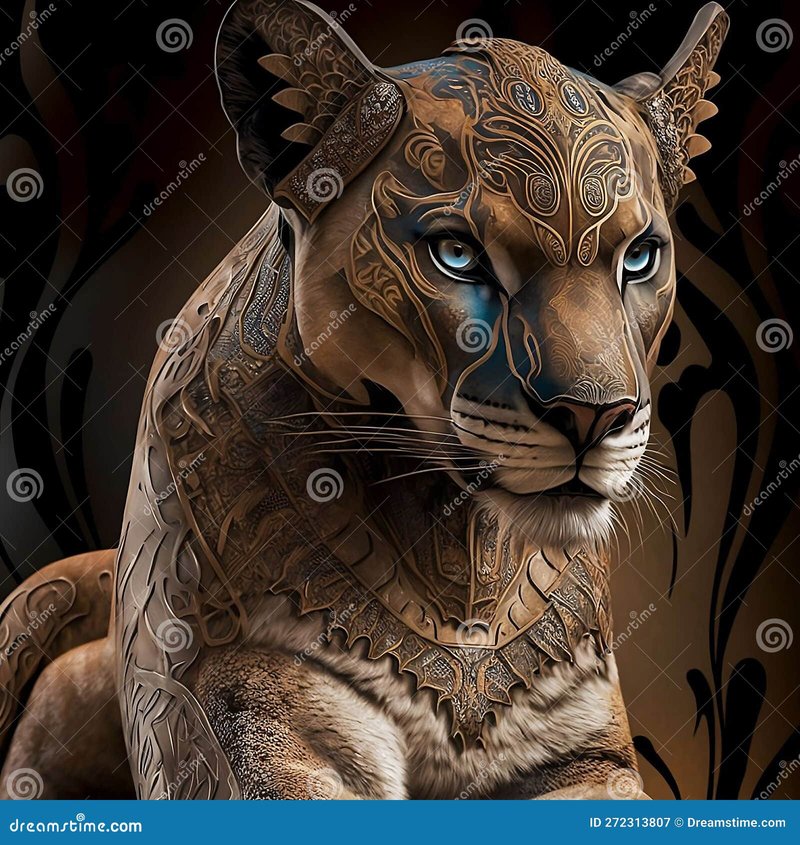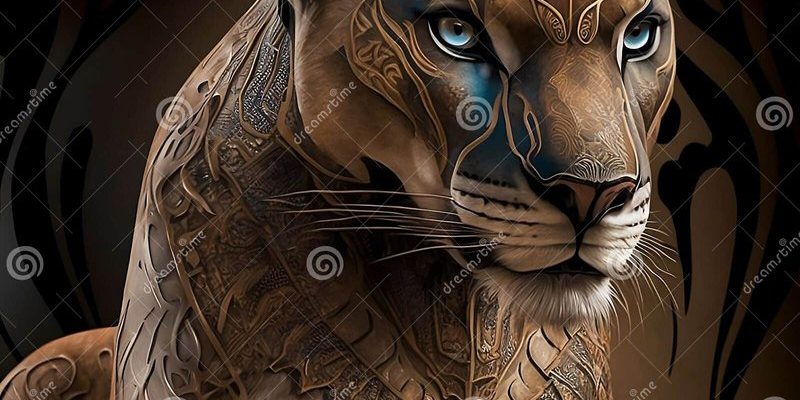
Across different regions, the puma’s representation can vary dramatically. Some see it as a fierce guardian spirit, while others might consider it a symbol of transformation. Let’s dive into how the puma is woven into the fabric of human culture and folklore, exploring tales that speak to our shared understanding of nature and the animals that share our world.
Pumas in Native American Cultures
Many Native American tribes hold the puma in high regard. To them, it’s not just an animal; it’s a spiritual being. For instance, the Inca civilization revered the puma as a powerful symbol of strength and bravery. They associated this creature with the sun and often depicted it in their art and rituals. The puma was seen as a guardian that protected the earth and its inhabitants, embodying the fierce spirit of nature.
Moreover, the puma often features in various tribal myths and legends. For the Lakota people, the puma represents wisdom and agility. It’s said that the puma teaches us to use our senses wisely and to act with purpose. This animal’s keen instincts are admired and respected, offering lessons on the importance of being aware and grounded in one’s environment.
You might be wondering how these beliefs translate into everyday life. Well, many tribes incorporate puma imagery into their crafts, dances, and storytelling traditions. This connection emphasizes respect for nature and highlights the deep bonds communities create with the animals around them.
Pumas in South American Folklore
In South America, the puma further solidifies its reputation as a cultural icon. For many indigenous cultures, the puma is often featured in folktales that stress the importance of balance in nature. The Puma as a Trickster story from the Andes teaches about the delicate relationship between humans and wildlife, where respect and harmony are crucial.
In these stories, the puma is often depicted as both a fierce hunter and a wise figure. For example, it is said that the puma can shapeshift, embodying the ability to traverse between the human realm and the spirit world. This duality reflects how cultures see the puma as a connector between life and death, making it a powerful symbol of transformation and rebirth.
The presence of puma motifs can be seen in textiles, pottery, and stone carvings across the continent. These artworks narrate stories that reflect local beliefs while celebrating the spirit of the puma. It’s like looking at a tapestry where every thread tells a story about the interconnectedness of life.
The Puma in Modern Media
Pumas have also made their mark on modern media, from films to literature. Often portrayed as symbols of fierce independence and strength, these big cats are favored characters in various narratives. For instance, in animated films, they often appear as wise mentors or brave heroes, guiding other characters through their challenges.
In literature, authors use the puma to symbolize courage and resilience. For example, in several adventure novels, protagonists often find themselves drawing inspiration from the puma’s tenacity and survival skills. Whether it’s about facing their fears or navigating difficult situations, the puma’s qualities resonate deeply with audiences.
Moreover, the rising interest in wildlife documentaries has helped people appreciate the puma more fully. These films showcase their beauty and grace, casting a spotlight on conservation efforts and the need to protect these magnificent creatures. The puma’s representation in media continues to evolve, showcasing its importance in both cultural narratives and contemporary conversations about wildlife preservation.
The Puma’s Role in Environmental Symbolism
The puma embodies a significant environmental symbol, especially in discussions about ecosystems and conservation. As a top predator, it plays a crucial role in maintaining the balance within its habitat. When we talk about ecosystems, we often think of the puma as a keystone species, meaning its presence or absence can dramatically impact various elements of the environment.
You might hear about “puma corridors,” areas that facilitate safe passage for these animals while promoting biodiversity. The puma’s role in these conversations highlights how human actions can affect wildlife. Some communities are now advocating for conservation efforts to ensure that pumas and their habitats are protected, showcasing how cultural respect for the animal aligns with modern ecological ethics.
Here’s the thing—when people acknowledge the puma’s role in nature, it fosters a deeper understanding of how interconnected we all are. It calls for a reassessment of our relationship with the environment, urging us to act responsibly and sustainably.
Puma Symbolism Around the World
Globally, the puma’s symbolism varies, reflecting local cultures and beliefs. In some regions, it represents courage and strength, aligning closely with the values held by warriors and leaders. In others, the puma is seen as a figure of mystery, often associated with the night and the unknown.
In Asia, for example, large cats similar to pumas are celebrated in stories and art, representing protector spirits. These cultural narratives often intertwine the puma’s qualities with human traits like resilience, cunning, and intelligence. By embodying these traits, the puma serves as a reminder that individuals can tap into their inner strength and resourcefulness.
As we explore these different representations, we see how the puma transcends borders, embodying universal themes of power and respect. It’s fascinating how a single animal can evoke such diverse interpretations depending on where you are in the world.
The Future of Puma Representation
As we move forward, the puma continues to be a focal point in discussions about preservation and cultural heritage. In a rapidly changing world, the stories and symbolism surrounding the puma are more important than ever. They remind us of the values we hold precious and the lessons nature imparts.
With increased interest in conservation, many cultures are reigniting their relationship with the puma, emphasizing its importance not just as a cultural symbol but as a crucial player in the ecosystem. Educational programs and community initiatives aim to foster respect for wildlife and highlight the need for balanced coexistence.
Honestly, as we learn more about the puma, we deepen our understanding of ourselves and our place within the world. This connection serves as a powerful reminder of the stories we share and the actions we take to protect the planet we call home.
In conclusion, exploring how the puma is represented in culture and folklore reveals the animal’s profound impact on human history. From ancient civilizations to modern media, the puma symbolizes strength, wisdom, and transformation. As we continue to weave these narratives, let’s celebrate the enduring power of the puma and the lessons it teaches us about our lives and the natural world.

